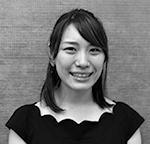Human Spaceflight Technology Directorate
Development of a New Type of Water Recovery System that Creates Drinking Water from Urine
Right now, work is underway on a construction plan for a moon-orbiting space station called Gateway. The goal is to be able to use Gateway as a base for conducting manned explorations to the moon, Mars and other planets lying further beyond. However, in order to expand the areas in which human beings can venture into, we need to minimize the amount of supplies such as water, food, and research materials that must be transported from Earth to the target destination. This new water recovery system announced in July 2019 will make a significant contribution toward achieving this.

The new system that was unveiled this time was produced for the purpose of conducting a demonstration test of the newly developed technologies and the system while in orbit, and is thus a subscale model with a small processing capacity. It will be launched in autumn 2019 and will be used for about half an year on the Japanese Experiment Module "Kibo" on the International Space Station (ISS) to perform verification tests by actually using the astronauts' urine. Based on the results of this test, a final full-scale model of the system will be developed which would be able to process the urine and condensate water from sweat and atmospheric moisture into purified water, which will then be provided for use on Gateway and at residential facilities built on the moon.
Development of this system started in 2011 as a joint research project with Kurita Water Industries Ltd., and production of the demonstration system started in 2015. The system uses a new electrolysis method to decompose organic compounds in the urine, which is expected to make the water recovery system smaller and more energy-efficient compared to the one that is currently being used on the ISS. Furthermore, since ISS's system removes scale components (water deposits) at the end of the water recovery process, it is more prone to have malfunctions from such causes as clotted filters, so that the system often needs to be operated with a lowered recovery rate. The new system brings this process of removing scales forward, before decomposing of organic compounds, thereby preventing malfunctions from happening. As a result, the system is able to achieve a high percentage of 85% for its water recovery rate. In addition, while ISS's system needs to have the cation exchange bed and the filter changed periodically, the new water recovery system has a self-regenerative type of cation exchange bed so that this does not need to be changed for a long period.

are used for the self-regeneration of the cation exchange bed.
This system makes water efficiently, and also reduces expendable supplies to a minimum. Tomoka Nagase, who is responsible for conducting technical coordination with the manufacturer, says, "It was difficult to establish the technology, because it is not a mature technology even on ground for the electrolysis method."
"It took two years to select what material to use for the electrode. We read papers and received advice from professors with specialized knowledge as we performed tests, but the various materials that we selected were repeatedly rejected because they did not have enough durability. In this situation, when we finally found a material that cleared the standards, I felt relief thinking that we would finally be able to proceed to the next step. Our project could have been terminated if the appropriate material for the electrode had not been found, so all I can say is that I was thoroughly relieved when we found the right material."
Nagase also says, "During the long development period, we received the support of many people, and some of the researchers in our team also changed. The hopes of various people will finally come to fruition with this system." The announcement made this time has taken this team one step closer toward the dream that they seek to achieve.
Profile

|
|
|---|
- Home>
- Global Activity>
- Public Relations>
- JAXA’s>
- JAXA's No.78>
- Development of a New Type of Water Recovery System that Creates Drinking Water from Urine